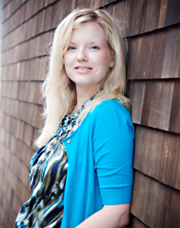Women in the High-Energy Universe: Kim Arcand
Kimberly Arcand has been a member of the Chandra Education & Public Outreach group since 1998. As the Media Production Coordinator, Kim's role includes oversight of a range of science outreach products and activities, including imaging and astronomical visualization, multimedia and print product development, exhibition creation and coordination, and development of museum/planetarium and broadcast products.
Growing up, I was the kid with the chemistry set, the microscope, and the stellarium as my favorite "toys" (well, after I grew out of a major purple unicorn phase). I loved science, or what I thought of as science: the idea of discovering something new, of figuring out puzzles, of contributing to people’s lives in some significant way. For my undergraduate work, I got a degree in biology, specializing in parasitology and infectious disease with the idea I would go on to be a medical doctor. But as I approached my senior year I realized I didn't want to go the long haul to be a doctor. Fortunately, in the meantime, I had become interested in computer science.
During my senior year of college, I won a fellowship with the RI Public Health Partnership to work on public health communication. In that position, I directed the creation of an interactive CD-ROM (and companion web site) for kids on Lyme disease that won an intellectual property invention award. I taught a Computer Science 101 course for a few semesters to help pay the bills. But still, I didn't know what I wanted to be when I "grew up." Then one day, back in 1998, I stumbled upon a job opening for NASA's Chandra X-ray Observatory for a public outreach webmaster and went from micro (as in the size of a cell and smaller) to macro (galaxies and the Universe as a whole).
Originally my work for Chandra was very technologically based – creating informal education and outreach platforms with web and CD-ROM technologies. I started in on some graduate class-work in computer science at Harvard, but left once I had my first child. What I really wanted to do was to try experiment with new, unexpected avenues to bring current scientific discoveries to less scientifically-inclined non-expert audiences.
One major project towards that goal involved working with the International Astronomical Union and UNESCO, to launch a series of large-scale astronomy exhibitions in non-traditional locations called "From Earth to the Universe" (FETTU). This project was put into public parks, metro stations, prisons, town squares, art festivals, etc. An important aspect of FETTU’s success was working with museums and other cultural or scientific organizations to partner with them on the exhibit creation to tap into both logistics handling and expertise, as well as awareness of locality and local culture.

Photo: Adeline & Grace Photography
We had so much fun with FETTU – which ended up in over a thousand locations around the world – that we are working on new generations of it that will include different content, such as astrobiology and general physics. I'm looking forward to working with even more people from all walks of life as we get these public science projects off the ground and help bring discoveries, such as Chandra's, to new audiences.
I have really enjoyed my career in science communication so far because it has evolved and changed as my interests have, and as the needs of the Chandra program have changed. My science-related career path hasn’t been perfect or prescribed – but I have tried to stay open to new things. These days, besides working on Chandra legacy projects, I'm doing graduate work at Brown University in public humanities and co-authoring a book (a sort of travel guide to the Universe). I like to think that on most days, I'm getting close to the cosmos but without the hazards of a long distance commute.
-Kim Arcand, CXC
http://twitter.com/kimberlykowal
Category:
Subcategory:
- Log in to post comments
